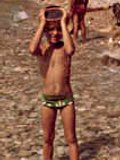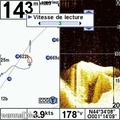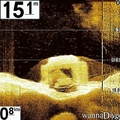This is an interactive map! Use controls to pan and zoom this map.
Access
|
English (Translate this text in English): Blockhaus are located south of the bay, after the Pyla dune and just befor the Petit Nice beach. There are a lot of underwater Blokhaus in the area, located into two diferent places: Gaillouneys and Sablonneys. Access is usually done by boat or by 4WD, some courageous divers walk by the shore.
English (Translate this text in English): Blockhaus are located south of the bay, after the Pyla dune and just befor the Petit Nice beach. There are a lot of underwater Blokhaus in the area, located into two diferent places: Gaillouneys and Sablonneys. Access is usually done by boat or by 4WD, some courageous divers walk by the shore.
Blockhaus are located south of the bay, after the Pyla dune and just befor the Petit Nice beach. There are a lot of underwater Blokhaus in the area, located into two diferent places: Gaillouneys and Sablonneys. Access is usually done by boat or by 4WD, some courageous divers walk by the shore.
English (Translate this text in English): Blockhaus are located south of the bay, after the Pyla dune and just befor the Petit Nice beach. There are a lot of underwater Blokhaus in the area, located into two diferent places: Gaillouneys and Sablonneys. Access is usually done by boat or by 4WD, some courageous divers walk by the shore.
English (Translate this text in English): Blockhaus are located south of the bay, after the Pyla dune and just befor the Petit Nice beach. There are a lot of underwater Blokhaus in the area, located into two diferent places: Gaillouneys and Sablonneys. Access is usually done by boat or by 4WD, some courageous divers walk by the shore.
English (Translate this text in English): Blockhaus are located south of the bay, after the Pyla dune and just befor the Petit Nice beach. There are a lot of underwater Blokhaus in the area, located into two diferent places: Gaillouneys and Sablonneys. Access is usually done by boat or by 4WD, some courageous divers walk by the shore.
English (Translate this text in English): Blockhaus are located south of the bay, after the Pyla dune and just befor the Petit Nice beach. There are a lot of underwater Blokhaus in the area, located into two diferent places: Gaillouneys and Sablonneys. Access is usually done by boat or by 4WD, some courageous divers walk by the shore.
English (Translate this text in English): Blockhaus are located south of the bay, after the Pyla dune and just befor the Petit Nice beach. There are a lot of underwater Blokhaus in the area, located into two diferent places: Gaillouneys and Sablonneys. Access is usually done by boat or by 4WD, some courageous divers walk by the shore.
English (Translate this text in English): Blockhaus are located south of the bay, after the Pyla dune and just befor the Petit Nice beach. There are a lot of underwater Blokhaus in the area, located into two diferent places: Gaillouneys and Sablonneys. Access is usually done by boat or by 4WD, some courageous divers walk by the shore.
How? By boat & from shore
Distance Long boat time (> 30min)
Easy to find? Easy to find
|
|
Dive site Characteristics
Alternative name Gaillouneys, Sablonneys
Average depth 15.0 m / 49.2 ft
Max depth 20.0 m / 65.6 ft
Current Medium ( 1-2 knots)
Visibility Medium ( 5 - 10 m)
Quality
Dive site quality Standard
Experience CMAS * / OW
Bio interest Interesting
More details
Week crowd
Week-end crowd
Dive type
- Ambiance
Dive site activities
- Marine biology
- Orientation
- Photography
Dangers
- Current
Additional Information
English (Translate this text in English): Most dived are 3 big blockhaus from World War 2 named the net, the conger and the passage (distance from one to another is between 30 to 50m). They slept from the beach into the chennal.
Take care if you enter into some of them ! There are som big conger eels and some time european lobsters.
English (Translate this text in English): Most dived are 3 big blockhaus from World War 2 named the net, the conger and the passage (distance from one to another is between 30 to 50m). They slept from the beach into the chennal.
Take care if you enter into some of them ! There are som big conger eels and some time european lobsters.
Most dived are 3 big blockhaus from World War 2 named the net, the conger and the passage (distance from one to another is between 30 to 50m). They slept from the beach into the chennal.
Take care if you enter into some of them ! There are som big conger eels and some time european lobsters.
English (Translate this text in English): Most dived are 3 big blockhaus from World War 2 named the net, the conger and the passage (distance from one to another is between 30 to 50m). They slept from the beach into the chennal.
Take care if you enter into some of them ! There are som big conger eels and some time european lobsters.
English (Translate this text in English): Most dived are 3 big blockhaus from World War 2 named the net, the conger and the passage (distance from one to another is between 30 to 50m). They slept from the beach into the chennal.
Take care if you enter into some of them ! There are som big conger eels and some time european lobsters.
English (Translate this text in English): Most dived are 3 big blockhaus from World War 2 named the net, the conger and the passage (distance from one to another is between 30 to 50m). They slept from the beach into the chennal.
Take care if you enter into some of them ! There are som big conger eels and some time european lobsters.
English (Translate this text in English): Most dived are 3 big blockhaus from World War 2 named the net, the conger and the passage (distance from one to another is between 30 to 50m). They slept from the beach into the chennal.
Take care if you enter into some of them ! There are som big conger eels and some time european lobsters.
English (Translate this text in English): Most dived are 3 big blockhaus from World War 2 named the net, the conger and the passage (distance from one to another is between 30 to 50m). They slept from the beach into the chennal.
Take care if you enter into some of them ! There are som big conger eels and some time european lobsters.
English (Translate this text in English): Most dived are 3 big blockhaus from World War 2 named the net, the conger and the passage (distance from one to another is between 30 to 50m). They slept from the beach into the chennal.
Take care if you enter into some of them ! There are som big conger eels and some time european lobsters.
 Dive logs
Dive logs
Show all (2)...

|
De
3 blockhaus - 3 blockhaus sur cette plongée: La citerne, la faille et le congre. Belle visi mais manque de lumière (ciel voilé). Quelques belles photos.
Suite... |

|
De
Tank & Conger - Nitrox dive (32%) to test the new Canon G9 + housing + YS27DX strobe. We were on 'La citerne', then 'Le congre'. I shot a very nice picture of torpedo ray (with bothe the eyes and the mouth!).
Suite... |
|
 Comments
Comments
Please login to use this tool.
No account yet? Register first; it's free!
Show all (1)...
Errors, Feedback
You can edit this page to correct errors or add new information. If you have any problems regarding this page, Send us feedback.
Wannadive.net 24/24
Wannadive.net on your mobile

Newsletter All news by email
 Les blockhaus
Les blockhaus Photos
Photos Dive logs
Dive logs Comments
Comments








By Anonymous , 09-10-2006
The Gallouneys Blockhaus - The dive on the blockhaus is quite interesting when tide coefficients are low. One mustn't forget that we are at the entrance of the Arcachon lagoon and therefore, the dive is only possible at tide slack due to the strong currents in this area. The water is often murky but will still be able to see enormous conger eels, spider crabs, rays and, for the lucky, the to rare lobster. The blockhaus are scattered on a 200 to 300m area and one can easily visit 3 to 5 of them in the same dive, due to their shallow depths (3 to 20m). Finally, an excellent map op the area can be purchased from the local diving shops; it shows the GPS ordinates, depth, directions, distances and type of each of the 17 blockhaus found on this spot.